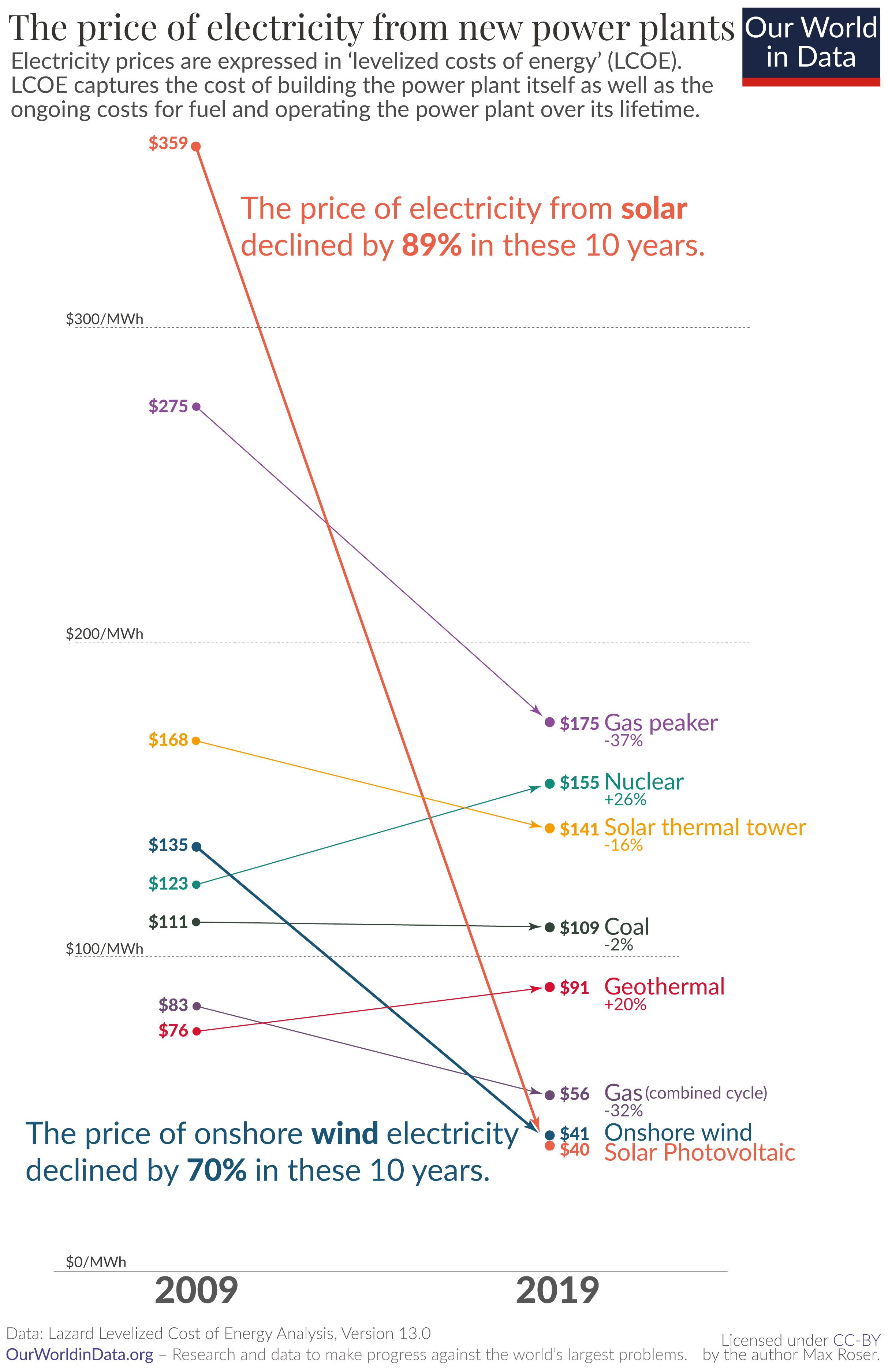SOME POSITIVE ENVIRONMENT NEWS FROM 2020
Allan Maynard, MSc. – February 10, 2021

Kenya’s Elephant Baby Boom – – In 2019, I traveled with my daughter’s family to Kenya – a trip that was magical in all meanings of the word. The safari experiences were many. It filled our hearts with joy and optimism. Optimism because we experienced first hand the dedication of the many people preserving and enhancing Kenya’s land and wildlife. One positive outcome is that Kenya’s elephant population has more than doubled over the past 3 decades. My daughter Jill wrote of elephants – “They are strength, curiosity, tenderness and stories untold’. We can have reason to hope.
There’s no doubt that 2020 was a discouraging year on many fronts. Daily news of a global pandemic and the consequences of environmental degradation are not the sunniest of subjects. Nonetheless, some positive news emerged: species were brought back from the edge of extinction; interest in renewable energy surged; environmental monitoring technology improved; new protected areas were created; and indigenous women leaders got some long-overdue credit and recognition. Perhaps, most important of all, well-informed young people such as Greta Thunberg, Delany Reynolds, Xiuhtezcati Martinez have been turning the climate crisis into humanity’s most unifying ethical moment.
POLITICS – Environmental advocates and leaders around the world celebrated the end of a U.S. administration that had taken the country 180 degrees in the wrong direction on all environmental issues – from toxics control, to land use, energy policy, and international cooperation on greenhouse gas emissions. President Biden has now chosen a knowledgeable team that is charged with making clean energy jobs and environmental protection a cornerstone of his economic plans. In recognition of the importance of indigenous leadership, this team includes Deb Haaland of New Mexico, for Interior Secretary, who is a member of the Laguna Pueblo people.
The new administration’s initiatives are of global significance sending a critical message to the global economy. Importantly, the US will re-enter the Paris Climate Agreement, the global pact forged five years ago among nearly 200 nations to avoid the worst impacts of climate change.
ONE HEALTH – The idea that the health of the planet and health of people are inextricably linked is not a new one, but this year’s COVID-19 pandemic, brought about by a zoonotic disease, threw that connection into stark relief. This year, more people began to connect the dots between environmental destruction, agriculture, livestock, wildlife trade and human disease.

https://www.ncbi.nlm.nih.gov/pmc/articles/PMC6630404/
TRUST IN SCIENCE – Due to the seriousness of the global pandemic the general public began paying closer attention to scientific information such as news about testing and vaccine development. Moreover the public witnessed, first hand, the deadly consequences of science denial by political leaders. As a result, researchers have found that trust in science has increased to an all-time high. As well, scepticism of science has decreased well below pre-pandemic levels. This change in attitude will hopefully help leaders gain societal support for climate change initiatives.
http://newscenter.sdsu.edu/sdsu_newscenter/news_story.aspx?sid=78221
FINANCE – 2020 is on track to be a record year for fossil fuel divestment announcements, led by major institutional investors such BlackRock. More than 1,300 institutions controlling 14.5 trillion dollars have divested in some way from fossil fuels, according to a tally by environmental group 350.org. One major divestment is especially symbolic – that is the 5 billion dollar Rockefeller Foundation. This endowment was largely built from the proceeds of Standard Oil a company that, at its peak, controlled more than 90% of petroleum products in the United States. Equally encouraging, the divestment movement has been in tandem with the rise of ESG (environmental, social and governance) investing.

COST OF RENEWABLES PLUMMETING – In the past decade, renewable prices have plummeted: onshore wind down 70%, solar by 89%. The main reason for this is that renewable costs are all about the cost of the technology – costs that come down fast as we use more of them. Further learning-by-doing from renewable use will drive down costs for low- and middle-income countries consuming more energy in the years ahead. As with vaccines, so with renewables: they are invented somewhere but can help everywhere.
https://ourworldindata.org/cheap-renewables-growth
GROWTH OF ELECTRIC VEHICLES (EVs) – Since their first introduction to the consumer market barely a decade ago, electric vehicles have rapidly grown in popularity. In 2010, there were only about 17,000 electric cars on roads around the world. By 2019, there were 7.2 million — that’s a 42,000% increase in electric vehicles in use. The number of EVs is still a small percentage of the total but the trend is clear. A significant number of car manufacturers have announced definitive dates for discontinuing the production of fossil fuel vehicles – including GM as stated in a press release for the Super Bowl – “GM is on its way to an all–electric future, with a commitment to 30 new global electric vehicles by 2025. We are aggressively going after every aspect of what it takes to put everyone in an EV because we need millions of EVs on the road to make a meaningful impact toward building a zero-emissions future.”
https://www.forbes.com/sites/enriquedans/2020/05/09/why-electric-vehicles-are-going-to-take-over-theworld/?sh=1e89bd12334e
https://www.barrons.com/articles/traditional-auto-makers-are-getting-into-evs-here-are-their-plans-to-battle-tesla-51606734002
A GLIMPSE OF WHAT CAN BE – The tragic pandemic has through most of 2020 caused so much human misery. But it also, for a time, gave Planet Earth a rest – a much-needed “breather”. Air pollution levels, as confirmed around the world, were reduced drastically. Of special note was the reduction of oxides of nitrogen (NOx) along with fine particulate matter. In Beijing, residents were, for a time, able to see the stars at night, an impossibility the year before. Planet Earth experienced a reprieve in the early half of 2020.
As global economies started to recover, some (or even most) of these gains are reversing. But having this reprieve gave us a glimpse of what the world could look like when global emissions are greatly reduced as per the objectives of the Paris Accord. The trends in advocacy, leadership, financial investments and overall awareness can be encouraging. Of course, there’s much to be done. Moreover, there are complexities that need to be addressed. Jobs in traditional sectors will be impacted over time. Green energy also has environmental impacts. However, there is no choice but to move forward to a sustainable future.

Thank you for shining a light on the many positives in 2020. Your article reminds me to be optimistic about our future. All the best to you and your family, Allan.
Allan
Thank you for this encouraging article … a salve for the troubling information regarding the realities of the global crisis we are facing. The wisdom of Einstein comes to mind when he says “No problem can be solved from the same level of consciousness that created it.” My personal hope is that we are able to utilize this knowledge with new minds and new hearts … a new level of consciousness. Humans seem to have lost touch with their state of alignment and interconnectedness with ALL of nature. When we come to realize this the hope is that it leads us to greater responsibility and healing for our planet and ourselves.
Thank you Allan for the hopeful tone of this article. It’s inspiring to take stock from time to time and recognize the positive strides we are making in addressing the most daunting challenge of our times.